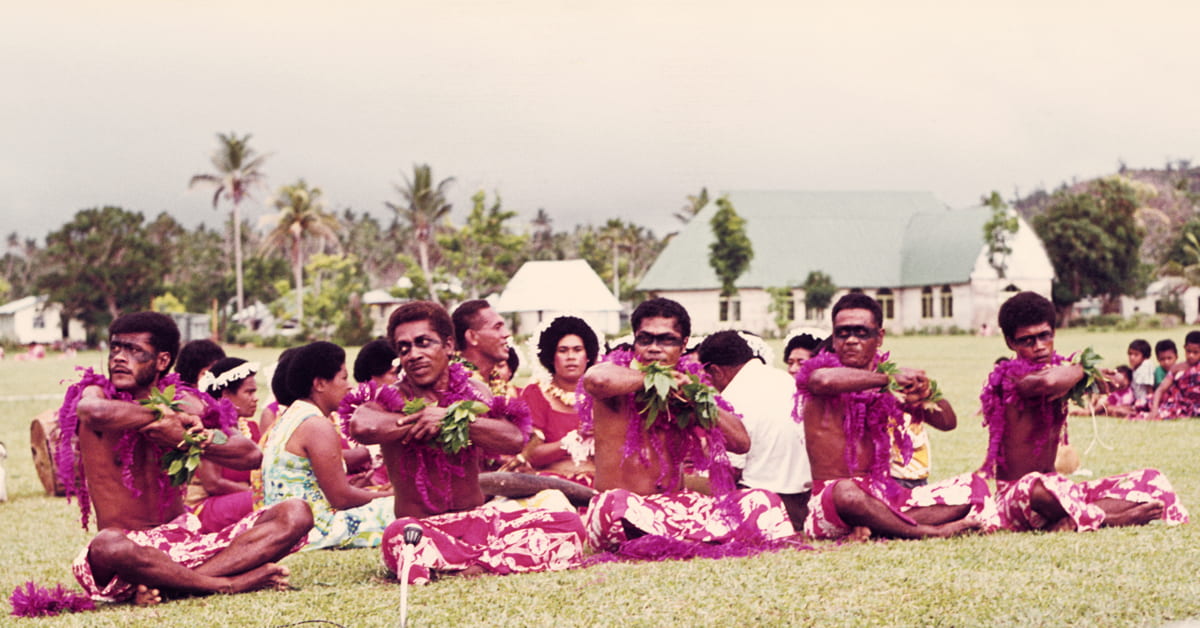Ni sa bula vinaka! Welcome to Fijian Language Week.
Na vosa vaka Bau (Bauan), referred to by linguists as Standard Fijian, is one of the three official languages of Fiji and is spoken as a first or second language by most indigenous Fijians. It is closely related to the dialect spoken on the chiefly island of Bau which European missionaries used to translate the Bible and adopted for their evangelical work in the early 19th century.
As well as vosa vaka Bau there are around 300 other dialects spoken across Fiji’s 100 inhabited islands. These dialects form two distinct but closely related language groups; one found in the western part of the main island of Viti Levu and the Yasawas, and the other in eastern parts of Vitu Levu, Vanu Levu and the islands to the south and east.1 Collectively these dialects make up the Fijian language or Vosa Vakaviti.
Learn some Fijian
Te Tumu Herenga holds a wide variety of Fijian language publications, including dictionaries and phrase books. While most can be found on the open shelves, some early and rare examples are kept in Special Collections, including this attractive introduction to Fijian for Europeans by an unnamed Marist Brother from 1906.2  Special Collections also hold recordings of Fijian music including meke, a traditional dance, performed by both men and women. Meke usually involve two groups of performers, the matana (dancers), seen in the foreground of the top photograph, and the vakatara, sitting behind the dancers, who chant and play the lali (Fijian wooden drum).3
Special Collections also hold recordings of Fijian music including meke, a traditional dance, performed by both men and women. Meke usually involve two groups of performers, the matana (dancers), seen in the foreground of the top photograph, and the vakatara, sitting behind the dancers, who chant and play the lali (Fijian wooden drum).3
Explore our resources
- Learn more about Fijian language, customs and history in the Journal of the Polynesian Society.
- View Fijian language resources, including dictionaries, phrase books, LPs, and more. Search the catalogue.
- Access other photographs taken in Fiji by University of Auckland researchers.
Katherine Pawley, Special Collections
References
1 Dixon, R. (1988). A grammar of Boumaa Fijian. University of Chicago Press.
2 A practical course to facilitate the study of the Fijian language. (1906). The Boys’ Home, Westmead. NZ Glass Case 499.45 P89
3 Meke veli, Tubou, Lakeba Island, Lau Province, Fiji. Photograph by Garth Rogers, 1975. Anthropology Photographic Archive, record number 403910.

